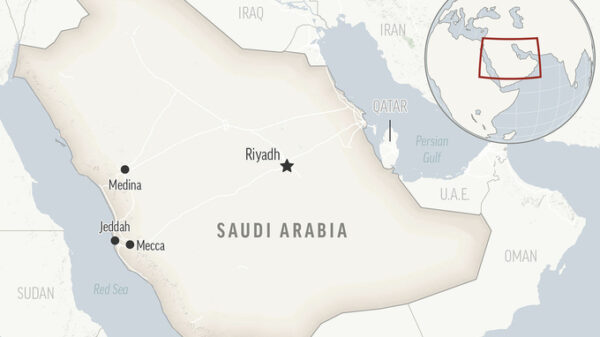A dietitian reviews the Warrior Diet, what to eat and whether you’ll lose weight following this extreme version of intermittent fasting.
Based on the ancient eating practices of warriors, the Warrior Diet advocates prolonged fasting for 20 hours per day with minimal food intake, followed by four hours of binge eating in the evening. The promised results are weight loss and alleged health benefits of mental clarity and more energy.
However, experts are skeptical of this plan and warn that severe diet restrictions pose health risks.
Best Weight Loss Diets
| RANK | DIET | OVERVIEW |
| No. 1 | WeightWatchers | WeightWatchers is focused on inspiring healthy living and improving overall well-being. That includes taking a holistic approach to help members eat healthier and move more. |
| No. 2 | Dash Diet | DASH diet, which stands for dietary approaches to stop hypertension, is a flexible, balanced and heart-healthy eating plan promoted by the National Heart, Lung and Blood Institute to stop (or prevent) high blood pressure. |
| No. 3 (tie) | Mayo Clinic Diet | Using evidence-based behavioral science, the Mayo Clinic diet is a 12-week program that is designed to establish healthy habits for life. |
| No. 3 (tie) | TLC Diet | The Therapeutic Lifestyle Changes diet calls for eating plenty of vegetables, fruits, bread, cereals and lean meats. The guidelines are broad enough that you’ll have a lot of latitude with what you eat. |
| No. 5 | Flexitarian Diet | With a flexitarian diet, also known as a semi-vegetarian diet, you don’t have to completely eliminate meat to reap the health benefits associated with vegetarianism. |
What Is the Warrior Diet?
The Warrior Diet was developed in 2001 by Ori Hofmekler, a former Israeli Special Forces member and founder of Defense Nutrition. It is based on the beliefs and observations of Hofmekler, rather than scientific research on weight loss or health benefits.
Also referred to as the 20:4 diet, the premise is similar to intermittent fasting or time-restricted eating but with a much shorter period of eating and much longer period of fasting. The Warrior Diet also has similarities to the OMAD diet – or one meal a day diet.
Dieters who follow the Warrior Diet are advised to eat less or not eat at all during the day and engage in short bursts of physical activity, like jumps, kicks and sprints. At dinner time, dieters eat one large meal within the four-hour window. Whole, organic, nutritious unprocessed foods without preservatives, added sugars or artificial sweeteners are recommended.
“It doesn’t make an appreciable difference that unprocessed, healthy and organic food choices are encouraged, as if that would bring even a modicum of health to this plan,” notes dietitian Bonnie Taub-Dix, creator of BetterThanDieting.com and author of “Read It Before You Eat It.”
Taub-Dix summarizes the Warrior Diet as “ridiculous.”
How Does the Warrior Diet Work?
The diet works by undereating or fasting for 20 hours per day, then consuming unrestricted amounts of specified foods at night.
Hofmekler claims that fasting for 20 hours each day triggers “survival instincts” and promotes fat loss, uses protein more efficiently, increases hormone levels, fosters stable blood sugar levels and enhances brain health to “improve the way we eat, feel, perform and look.”
“There is no scientific data to suggest the Warrior Diet can increase your energy levels and mental clarity whatsoever,” says Taylor Wallace, food and nutrition research scientist and CEO of Think Healthy Group. “All we have is anecdotal evidence that is probably plagued by the placebo effect.”
How to Follow the Warrior Diet
Initially, Warrior dieters follow a three-week multiphase plan:
Phase 1 detox, week 1:
During the fasting period, small portions of raw fruits and vegetables, fresh vegetable juices, broth, plain yogurt, cottage cheese and hard boiled (or poached) eggs are allowed. In the evening, a salad with oil and vinegar, small amounts of cheese and plant-based foods – like beans, steamed vegetables and whole grains such as brown rice, quinoa and barley – are permitted. Unsweetened coffee, tea, water and small amounts of milk can be consumed throughout the day.
Phase 2 high fat, week 2:
This period follows the same guidelines as phase 1 during the fast. Dinner consists of a salad with oil and vinegar, lean animal protein such as fish or poultry, cooked vegetables and at least one handful of nuts. Grains, beans and other starches are not permitted during phase 2.
Phase 3 concluding fat loss, week 3:
Dieters follow the same restrictions during the fast and alternate between high carbohydrate and high protein for the evening meal.
The three-week multiphase plan can be repeated until weight loss goals are met.
Multivitamins, probiotics and amino acids are recommended supplements.
How Much Weight Can You Lose on the Warrior Diet?
Short-term weight loss is achievable when you are only allowed to eat for a few hours in the evening – but is it a healthy approach? Severely limiting calories should result in weight loss. However, binging and overconsuming food in the evening could diminish weight loss efforts.
“The Warrior Diet (like most diets) has not shown any significant long-term weight loss,” Wallace says. Sustaining a 20-hour fast over the long term is unrealistic, and it is also difficult to eat a day’s worth of healthy nutrients and calories in a four-hour period, Wallace adds.
It is important to note that severe calorie restriction results in a lower basal metabolic rate, which makes it easier to put on weight when you resume regular eating patterns.
“Restrictive dieting is not sustainable and doesn’t work for most people in our modern lifestyles” Wallace says. He recommends incorporating small, healthy changes over time as the best means of long-term success and weight maintenance.
What Foods Can You Eat on the Warrior Diet?
During the 20-hour fast, you’re allowed to eat small amounts of:
- Dairy products.
- Eggs.
- Raw fruits and vegetables.
- Calorie-free beverages.
Foods not allowed on the diet include:
- Candy.
- Cookies.
- Cakes.
- Chips.
- Fast food.
- Fried foods.
- Processed meats.
- Refined carbohydrates.
Is the Warrior Diet Healthy?
The Warrior Diet is not considered a healthy diet by experts.
Although there is little research on the Warrior Diet or 20-hour fasts, other methods of intermittent fasting have been shown to promote weight loss.
Intermittent fasting is an umbrella term for various diets that cycle between periods of fasting and non-fasting. There are multiple intermittent fasting plans, including alternate day fasting, fasting for two days and up to four days per week. A popular version is called the 16:8 method in which dieters fast for 16 hours per day and eat healthy foods during the remaining eight hours daily.
Numerous studies have evaluated the benefits of these types of intermittent fasting. One study discovered that in addition to weight loss, intermittent fasting can help control blood sugar, insulin levels, cholesterol and inflammation. A 2018 review of six studies on intermittent fasting found that fasting was better than no weight control strategy but just as effective as cutting calories without fasting for short-term weight loss.
Intermittent fasting may have some beneficial effects, particularly when combined with exercise. Wallace recommends eating earlier during the day, which is probably better for metabolic health than eating at night.
There is no Warrior Diet maintenance plan.
Who Should Not Follow the Warrior Diet?
If you’ve been battling with weight issues, this diet is not for you.
“When it comes to eating, it’s best to follow a diet that makes you feel satisfied, not stressed like this restrictive plan that is based on warriors who were out hunting all day, barely eating and then binging on whatever they killed,” Taub-Dix says.
There is a long list of individuals who should not follow this diet, including:
- Children.
- Pregnant and lactating women.
- Anyone with a medical condition.
- Athletes.
- People with eating disorders.
- Underweight individuals.
Potential side effects include fatigue, dizziness, low energy, insomnia, extreme hunger, low blood sugar, irritability and hormonal imbalance.
The real question is who should follow this diet?
“There is nothing good about war, and I feel the same about the Warrior Diet. Fight the urge to try it!” Taub-Dix recommends.
What Does the Warrior Diet Cost?
The Warrior Diet is not expensive, as most of the foods are widely available and only require small amounts. It should fit within the budgets of most people.
Warrior Diet: The Bottom Line
Hunger is hard to ignore for long periods of time making The Warrior Diet a very rigid plan, which is difficult to follow.
“Every individual is different in their ability to adhere, withstand and tolerate a diet plan, so there may be people who can tolerate hunger and follow this diet” Wallace says. If you do choose the Warrior Diet, Wallace recommends making sure you get all of your food groups and nutrients.
Going out to dinner or attending celebrations may prove difficult with the eating plan restrictions. In addition, exercising during the fasting period may be difficult because of low energy and blood sugar levels.
Pros
- Short-term weight loss.
Cons
- Extreme hunger.
- Not sustainable or suitable for most overweight people.
- Hard to meet nutrient needs.
- Low blood sugar and energy during the fast.
- Could promote disordered eating.
- Controlling food intake during the eating phase.
- Potential serious side effects.
- Very rigid plan.
Copyright 2021 Associated Press. All rights reserved.
Source: https://health.usnews.com/wellness/food/articles/the-warrior-diet






























You must be logged in to post a comment Login